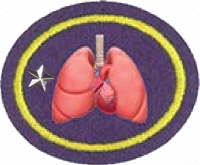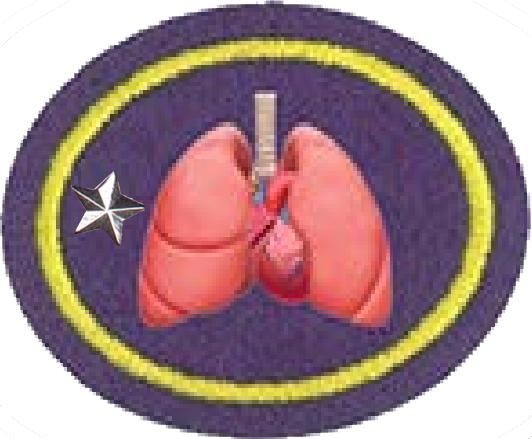Difference between revisions of "AY Honors/Cardiopulmonary System - Advanced/Requirements"
(+ Cardiopulmonary System Advanced Requirements Page from the Australian Union Conference) |
|||
| Line 66: | Line 66: | ||
<noinclude></translate></noinclude><section end=req7f /></b> | <noinclude></translate></noinclude><section end=req7f /></b> | ||
| − | |||
<b>8. <section begin=req8 /><noinclude><translate></noinclude>Choose three heart problems from the list. Explain how they affect the heart and blood, and what might happen if they aren’t taken care of. | <b>8. <section begin=req8 /><noinclude><translate></noinclude>Choose three heart problems from the list. Explain how they affect the heart and blood, and what might happen if they aren’t taken care of. | ||
<noinclude></translate></noinclude><section end=req8 /></b> | <noinclude></translate></noinclude><section end=req8 /></b> | ||
| Line 84: | Line 83: | ||
:<b>e. <section begin=req8e /><noinclude><translate></noinclude>Cardiac arrest | :<b>e. <section begin=req8e /><noinclude><translate></noinclude>Cardiac arrest | ||
<noinclude></translate></noinclude><section end=req8e /></b> | <noinclude></translate></noinclude><section end=req8e /></b> | ||
| − | |||
:<b>f. <section begin=req8f /><noinclude><translate></noinclude>Coronary heart disease | :<b>f. <section begin=req8f /><noinclude><translate></noinclude>Coronary heart disease | ||
<noinclude></translate></noinclude><section end=req8f /></b> | <noinclude></translate></noinclude><section end=req8f /></b> | ||
| + | <section begin=challenge /> | ||
<b>9. <section begin=req9 /><noinclude><translate></noinclude>Safely participate in a dissection of a heart, observing and discussing the following: | <b>9. <section begin=req9 /><noinclude><translate></noinclude>Safely participate in a dissection of a heart, observing and discussing the following: | ||
<noinclude></translate></noinclude><section end=req9 /></b> | <noinclude></translate></noinclude><section end=req9 /></b> | ||
| Line 100: | Line 99: | ||
:<b>c. <section begin=req9c /><noinclude><translate></noinclude>Observe different thicknesses of heart muscle for left vs. right ventricles, and also atrium vs ventricles. | :<b>c. <section begin=req9c /><noinclude><translate></noinclude>Observe different thicknesses of heart muscle for left vs. right ventricles, and also atrium vs ventricles. | ||
<noinclude></translate></noinclude><section end=req9c /></b> | <noinclude></translate></noinclude><section end=req9c /></b> | ||
| + | <section end=challenge /> | ||
<b>10. <section begin=req10 /><noinclude><translate></noinclude>Linking back to Pauls writing in 1 Corinthians 12, what example does the way the heart and lungs work together demonstrate to us? | <b>10. <section begin=req10 /><noinclude><translate></noinclude>Linking back to Pauls writing in 1 Corinthians 12, what example does the way the heart and lungs work together demonstrate to us? | ||
Latest revision as of 00:34, 18 September 2023
Skill Level
1
Year
2021
Version
02.12.2025
Approval authority
Australian Union
1. Discuss the anatomy and physiology of the heart and vessels leading into and away from it.
2. What are the special nerves that help the heart beat? How do these messages move through the heart muscle?
3. What does an ECG show? What do the ups and down mean?
4. What are some things that can change how fast the heart beats, how hard it pumps or how smoothly blood flows?
5. How do the lungs help the heart stay healthy? And how does the heart help the lungs?
6. Can you explain what these medical word parts mean?
- a. Cardio
- b. Atrio-
- c. Ventriculo
- d. Veno
- e. Artero
- f. Myo-
- g. Endo-
- h. Peri-
7. Choose four of the following heart-related terms and give their definitions:
- a. Hypotension
- b. Hypertension
- c. Endocardium
- d. Myocardium
- e. Pericardium
- f. Pulmonary Arterial hypertension
8. Choose three heart problems from the list. Explain how they affect the heart and blood, and what might happen if they aren’t taken care of.
- a. Chronic obstructive pulmonary disease (COPD)
- b. Ventricular septal defect
- c. Hypertension
- d. Heart failure
- e. Cardiac arrest
- f. Coronary heart disease
9. Safely participate in a dissection of a heart, observing and discussing the following:
- a. Dissect the heart along the sagittal plane, so all four chambers and valves can be viewed.
- b. Be able to identify and describe the role of each of the chambers.
- c. Observe different thicknesses of heart muscle for left vs. right ventricles, and also atrium vs ventricles.
10. Linking back to Pauls writing in 1 Corinthians 12, what example does the way the heart and lungs work together demonstrate to us?



